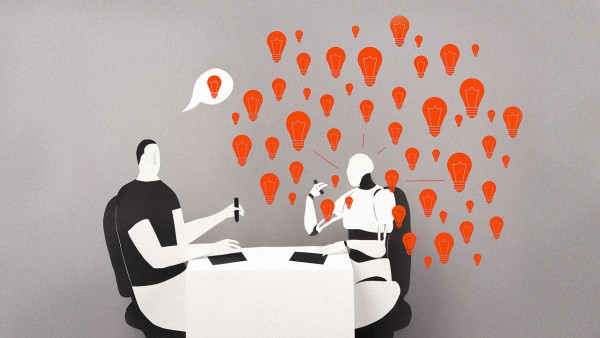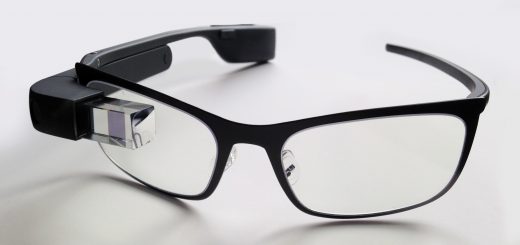Designers: Robots Are Coming For Your Jobs
Computers will eventually take our jobs. At least that’s what we’re being told. Machines have been replacing workers for centuries, and intelligent robots will only accelerate this trend. Autonomous vehicles will strand taxi drivers, news filing software will write journalists out of the story, and surgical robots will excise doctors.
Designers are supposed to be different. Those of us who fashion clothes, model new products, and shape the world to conform to our sensibilities consider ourselves too creative for any machine to replace. Many of us are convinced that we are unique, our skills irreplaceable. This is not entirely true. Advances in artificial intelligence will usher in a new regime of hyper-personalized designs and tools, a trend with which human designers cannot possibly hope to keep pace. Computers will prove to be far more creative—fearlessly creative—than most humans. Designers are in for a period of radical change and must learn to adapt. Those who don’t might as well start looking now for a new line of work.
Modern design is built upon a process where designers methodically build a case around human behavior to define an ideal median solution that solves the problem for a group of users. The same process plays out across the world of design: in fashion, industrial design, software design, and so on. Take for example the design of software user interfaces: In this case the designer creates navigation solutions, organizational schemes for information, on-screen visual mechanisms, and other affordances to make the interface workable and enjoyable. These designs could be described as a “median solution” simply because as a matter of efficiency, the designers are creating for an audience, often a mass-market audience, and in doing so, they are normalizing their decisions for a group.
But advances in technology are changing our approach to the mass market. We see it every day on website interfaces that have become populated by customized collections of content, served up by new algorithms that create personalized browsing experiences for individual Internet users. Netflix users, for example, love the company’s sophisticated personalization technologies that recommend the comedies, action movies, or dramas that each customer will most likely want to watch.
But these human-led creative processes have only just scratched the surface. Cognitive computing systems of the future will drive hyper-personalization to new levels, such that website templates, navigational tools, and other common mechanisms will automatically redesign and reconfigure themselves for each individual user based on his or her preferences and habits.
Today, the look and navigation tools of any interface—be it Facebook, Amazon, or Netflix—were created by a design team that spent considerable time trying to define the best way to organize a massive catalog of content and to create specific interactions and visual structures to display and highlight information. Now imagine if these interfaces could be dynamically configured to accommodate each and every user. It’s not yet possible because of the sheer complexity of the task. But advances in AI and cognitive systems are making it possible for the computer to do more of this without human assistance. So instead of standardized movie categories for all, Netflix would use a cognitive system to learn enough about you such that it might introduce a “weekend flicks” category featuring the type of movies you tend to prefer on Saturdays and Sundays. Other categories might include “golf movies” and “dystopian tales.”
This kind of future is a win-win for consumers and businesses. Customers are happiest—and most likely to spend more money—when they feel valued and catered to as if they were VIPs. So any edge that can help companies offer hyper-personalized services and products will almost certainly boost the bottom line.
What promises to be a boon for businesses and consumers will definitely shake up product design as we know it. It’s hard to imagine a computer replacing the lived experience and sense of taste that a human designer brings to a project. But it’s easy to see how an AI-infused computer algorithm such as the future Netflix—after a human has completed the initial design and programming—could do the hard work of improving and evolving to accommodate user preferences largely on its own.
Moreover, 90% of product design today happens in the “fat middle ground” between purely aesthetic and purely technical—incrementally tweaking designs, optimizing column widths, and experimenting with color schemes. These tasks are bread and butter for much of the design industry, and they are progressively being automated. For now most of these design challenges are contextual enough that they require a human touch. But AI-infused computers are getting better at learning context, which means they can tackle more generalized design problems. As they improve, the simple and tedious task of regularly tweaking a website such as Facebook or Google will become codified.
And watch out, for computers will be fearless. Unburdened by human notions of good taste and traditional aesthetics, they will come up with bold and unexpected designs. There is no reason, for example, that a computer would shy away from using a hot pink interface when the modeling shows it will work. Sooner or later, design by AI will be an improvement.
There may indeed be a business case for a human designer to intervene or at least question why the AI is trying to apply counterintuitive decisions (i.e., coloring the interface hot pink). And artisanal designers will continue to thrive, in large measure because their artistic contribution to design is a reflection of an underappreciated aspect of humanity—our love of flaws, personality, and shared experiences.
But most designers—those of us who tinker, iterate, and improve existing designs—must start thinking now about where we will fit into an industry that, in a few short years, will no longer need the bulk of our current labor. It has happened before. As I was getting out of school, the graphic design industry was just coming to terms with the impact of desktop publishing. Thousands of traditional design-related jobs disappeared overnight as tools such as Quark Xpress, Adobe Illustrator, and Photoshop made it possible for a single designer to do what previously took an entire team to do. At the same time, the technology made it possible for anyone to participate, and drove a democratization of design. We feared this new access to design tools would spell the end of good design, but that’s not what happened. In fact, as new tools made production more efficient, designers were left to explore and invent more freely, which fostered an explosion in creativity that benefits our world today.
I expect the same will happen with today’s advent of fearless creative machines. Designers must accept the inevitable change and find new roles that complement the technology. Perhaps designers will be needed to guide and teach these new automated systems. Over time, the most creative in our field will train their efforts on developing original human value propositions. Our industry will learn to focus on the truly fundamental questions—to give the machines their purpose and direct them to perform their magic.
Courtesy: fastcodesign.com




